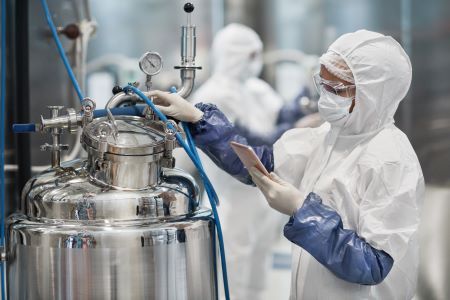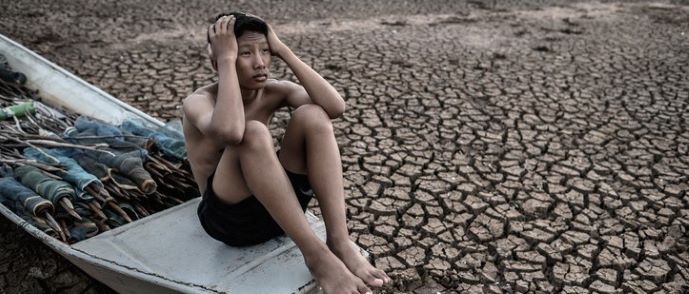Report on Innovative Carbon Sequestration Technology and its Contribution to Sustainable Development Goals
A United States-based initiative by the startup Applied Carbon has introduced a novel technology for atmospheric carbon dioxide removal. This report details the technology’s function, its operational model, and its significant alignment with several United Nations Sustainable Development Goals (SDGs), particularly those concerning climate action, sustainable agriculture, and responsible innovation.
SDG 13: Climate Action – A Direct Approach to Carbon Mitigation
The primary objective of the Applied Carbon initiative is to directly combat climate change by capturing and sequestering atmospheric carbon dioxide, a critical measure for achieving SDG 13.
Carbon Sequestration via Biochar
- Technology: An agricultural robot converts plant waste into biochar, a stable, charcoal-like substance.
- Impact: This process securely locks carbon into the soil for extended periods, preventing its release into the atmosphere as CO2.
- Target: The technology aims to remove up to 2 billion metric tons of carbon from the atmosphere annually, making a substantial contribution to mitigating global warming.
SDG 9 & SDG 12: Industry, Innovation, and Responsible Production
The project exemplifies advancements in sustainable industry and responsible production patterns by redesigning the biochar manufacturing process to be efficient and decentralized.
Revolutionizing Production Logistics
- Challenge: Traditional biochar production is hampered by high logistical costs and energy consumption associated with transporting agricultural waste to centralized facilities.
- Innovation (SDG 9): Applied Carbon developed a mobile production unit that operates directly on farms. This eliminates transportation needs, reducing the carbon footprint of the process itself.
- Responsible Production (SDG 12): The system utilizes agricultural residues, transforming waste into a valuable product. This promotes a circular economy model by reducing waste and creating a sustainable production cycle.
SDG 2 & SDG 15: Zero Hunger and Life on Land
Beyond carbon capture, the technology provides significant co-benefits that support sustainable agriculture and the health of terrestrial ecosystems.
Enhancing Agricultural Systems
- Soil Fertility: The application of biochar to farmland improves soil structure, water retention, and nutrient availability.
- Increased Crop Yields (SDG 2): Healthier soil leads to enhanced crop productivity, contributing to food security and the goal of Zero Hunger.
- Land Restoration (SDG 15): By improving soil health, biochar helps combat land degradation, supporting the protection and restoration of terrestrial ecosystems.
The On-Farm Production Process and Energy Efficiency (SDG 7)
The operational mechanics of the mobile unit are designed for efficiency and self-sufficiency, aligning with the principles of affordable and clean energy.
Operational Steps:
- A harvester collects crop residues and feeds them into the mobile machine, which is towed by a tractor.
- The machine shreds the residues and dries them using recycled heat from its own reactor.
- Through a process called pyrolysis, the biomass is converted into biochar and syngas.
- Clean Energy (SDG 7): The syngas produced during pyrolysis is used to power the machine, creating a self-sustaining energy loop and minimizing reliance on external fossil fuels.
- The finished biochar is quenched with water and spread directly onto the field for soil integration.
Which SDGs are addressed or connected to the issues highlighted in the article?
-
SDG 13: Climate Action
- The article’s primary focus is on addressing “global warming and climate change” by developing innovative technology to absorb “atmospheric carbon dioxide.” This directly aligns with the goal of taking urgent action to combat climate change and its impacts.
-
SDG 2: Zero Hunger
- The article mentions that the biochar produced not only captures carbon but also “enhances soil fertility and crop yields.” This contributes to achieving sustainable agriculture and food production, which is a core component of SDG 2.
-
SDG 9: Industry, Innovation and Infrastructure
- The development of an “agricultural robot” by the U.S. startup Applied Carbon is a clear example of technological innovation. The article highlights how this “revolutionary approach” aims to make biochar production sustainable and efficient by overcoming logistical challenges, which relates to building resilient infrastructure and fostering innovation.
-
SDG 15: Life on Land
- The use of biochar to “enrich soils” and enhance “soil fertility” directly contributes to protecting and restoring terrestrial ecosystems. The article notes that biochar production is an ancient practice used to improve soils, aligning with the goal of halting and reversing land degradation.
What specific targets under those SDGs can be identified based on the article’s content?
-
SDG 13: Climate Action
- Target 13.2: Integrate climate change measures into national policies, strategies and planning.
- The article describes a “groundbreaking initiative” by the United States to address CO2 emissions, demonstrating a national-level effort to integrate climate change mitigation measures.
- Target 13.2: Integrate climate change measures into national policies, strategies and planning.
-
SDG 2: Zero Hunger
- Target 2.4: By 2030, ensure sustainable food production systems and implement resilient agricultural practices that increase productivity and production… and that progressively improve land and soil quality.
- The technology described promotes sustainable agriculture by converting plant waste into biochar, which the article explicitly states “enhances soil fertility and crop yields.” This is a resilient agricultural practice that improves soil quality and productivity.
- Target 2.4: By 2030, ensure sustainable food production systems and implement resilient agricultural practices that increase productivity and production… and that progressively improve land and soil quality.
-
SDG 9: Industry, Innovation and Infrastructure
- Target 9.4: By 2030, upgrade infrastructure and retrofit industries to make them sustainable, with increased resource-use efficiency and greater adoption of clean and environmentally sound technologies…
- Applied Carbon’s development of a mobile machine that converts crop residues into biochar on-site is a “clean and environmentally sound technology.” It increases resource-use efficiency by utilizing plant waste and solving the “costly and energy-intensive” problem of transportation.
- Target 9.4: By 2030, upgrade infrastructure and retrofit industries to make them sustainable, with increased resource-use efficiency and greater adoption of clean and environmentally sound technologies…
-
SDG 15: Life on Land
- Target 15.3: By 2030, combat desertification, restore degraded land and soil… and strive to achieve a land degradation-neutral world.
- The article highlights that biochar “enhances soil fertility” and mentions its historical use to “enrich soils in the Amazon basin.” This practice directly contributes to restoring degraded land and improving soil quality.
- Target 15.3: By 2030, combat desertification, restore degraded land and soil… and strive to achieve a land degradation-neutral world.
Are there any indicators mentioned or implied in the article that can be used to measure progress towards the identified targets?
-
For SDG 13 (Climate Action)
- Amount of carbon removed annually: The article explicitly mentions a quantifiable goal for the technology, which is to “remove up to 2 billion metric tons of carbon annually.” This serves as a direct indicator for measuring progress in climate change mitigation.
- Atmospheric CO2 concentration: The article mentions that the concentration of CO2 in the atmosphere “averages around 380 parts per million.” This figure is a standard indicator used to track the overall progress of efforts to combat climate change.
-
For SDG 2 & 15 (Zero Hunger & Life on Land)
- Increase in crop yields: An implied indicator is the measurement of crop productivity. The article states that the technology aims to “simultaneously enhanc[e] crop yields,” which can be measured to assess progress towards Target 2.4.
- Improvement in soil fertility: Another implied indicator is the quality of the soil. The article repeatedly mentions that biochar “enhances soil fertility.” Progress can be measured by analyzing soil composition and health over time in areas where the technology is applied, relevant to both Target 2.4 and 15.3.
-
For SDG 9 (Industry, Innovation and Infrastructure)
- Adoption rate of sustainable technology: An implied indicator is the widespread adoption of Applied Carbon’s machine. The article suggests the goal is “widespread adoption of biochar as a sustainable solution,” which can be tracked by the number of farms or hectares of land utilizing this innovative technology.
Table of SDGs, Targets, and Indicators
| SDGs | Targets | Indicators |
|---|---|---|
| SDG 13: Climate Action | 13.2: Integrate climate change measures into national policies, strategies and planning. |
|
| SDG 2: Zero Hunger | 2.4: Ensure sustainable food production systems and implement resilient agricultural practices that increase productivity and improve land and soil quality. |
|
| SDG 9: Industry, Innovation and Infrastructure | 9.4: Upgrade infrastructure and retrofit industries to make them sustainable…with greater adoption of clean and environmentally sound technologies. |
|
| SDG 15: Life on Land | 15.3: Combat desertification, restore degraded land and soil. |
|
Source: sustainability-times.com


.jpg)




